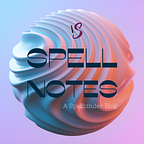Spring 2023 — Poetry
‘Summer Solstice, 4:53am’ by Danielle Gilmour
‘I move so slowly through the acres
that my legs are dewy.
The waters of the estuary are coming -
or going — I’m unsure which but
whichever they are they don’t need to ask’
Danielle Gilmour’s poem ‘Summer Solstice, 4:53am’ is about giving birth. This subject matter is explored with a beautiful tenderness and the verse is intensely lyrical. The most interesting aspect of the work is the idea of the longest day of the year, the Summer Solstice, which mirrors the longevity of labour but also the beauty of this. Exploring this moment of great physical pain through a semantic field of nature creates a sense of calm. In this way, nature works as a distraction and coping mechanism for the pregnant woman. This also draws attention to the natural process of giving birth. The descriptions of nature which work on a metaphorical level to reveal the process of labour are especially memorable within the first stanza of the poem which is included above.
Pagans are people with a great appreciation for and awareness of nature. They celebrate the Summer Solstice at Stone Henge, a historic site which is mentioned in the poem. This part of Gilmour’s verse conveys a great sense of dynamism as she refers to ‘swaying’ and there is music — the sound of voices, a ukulele, chants and drums. This scene is reminiscent of traditional folk practices. At this point, we are so removed from the physical aspects of pregnancy that we become completely immersed in this celebratory ritual, so interconnected with the natural world. Not only does this emphasize the natural aspect of birth, it also highlights its magnificence. It is a moment of celebration and sheer joy, as much as it is an experience of pain. It also imbues this moment with a sense of the divine, and something truly miraculous.
The poem is so complete in its imagery and so skilled in its rhythm that it remains… unforgettable.
Amber Kennedy, Editor-in-Chief
If you would like to read/ see this work in full, you can subscribe here. Our magazine is available in PDF and paperback format. Click here to find out more.
This blog post, along with many others, is also available to read on the Spellnotes section of our website.
If you don’t follow us on social media already, you can find us on the following platforms:
Instagram
You can also listen to our seasonal issue inspired playlists on our Spotify channel.
Photo by John Nail: https://www.pexels.com/photo/stonehenge-england-1448136/
